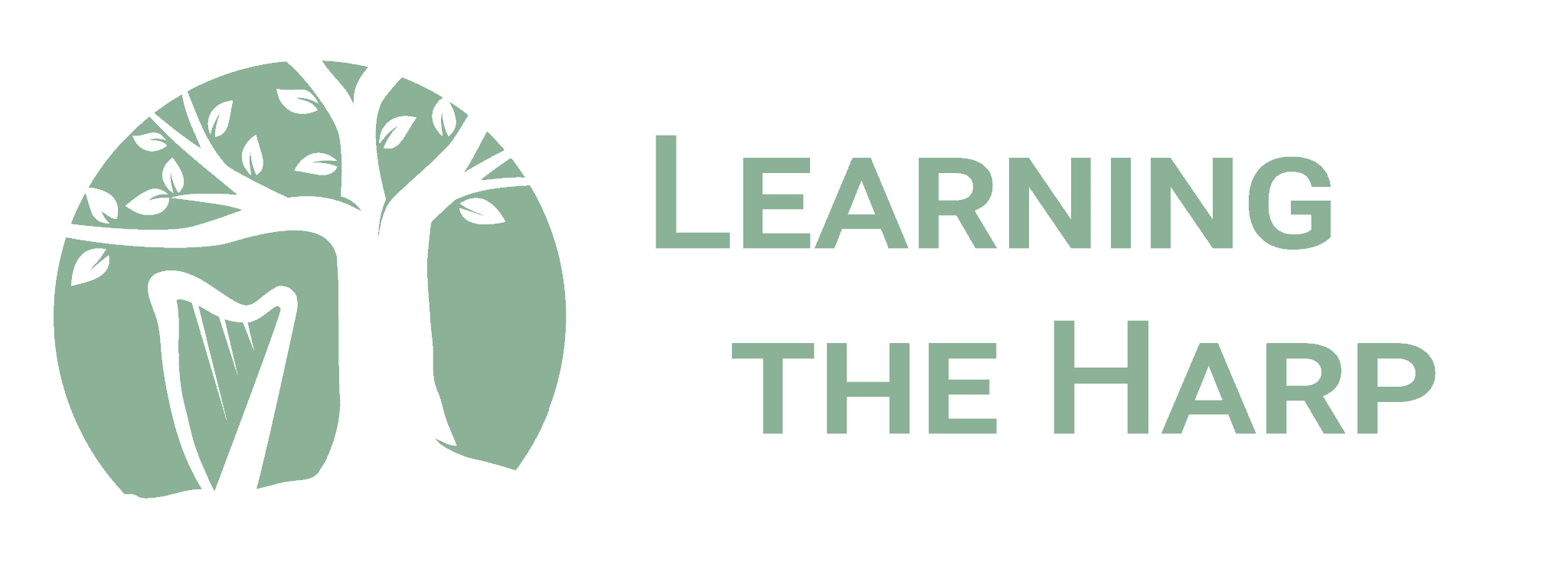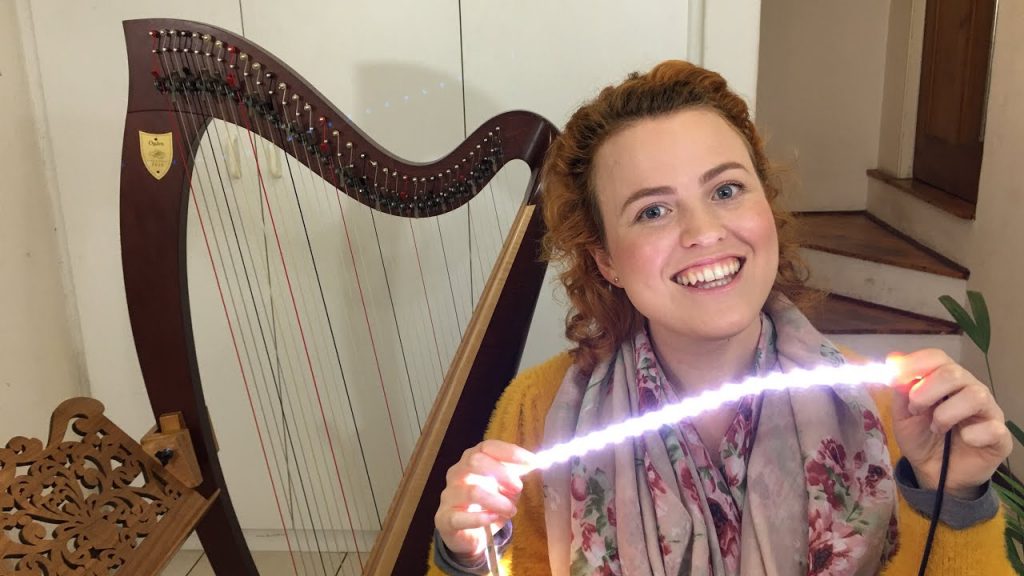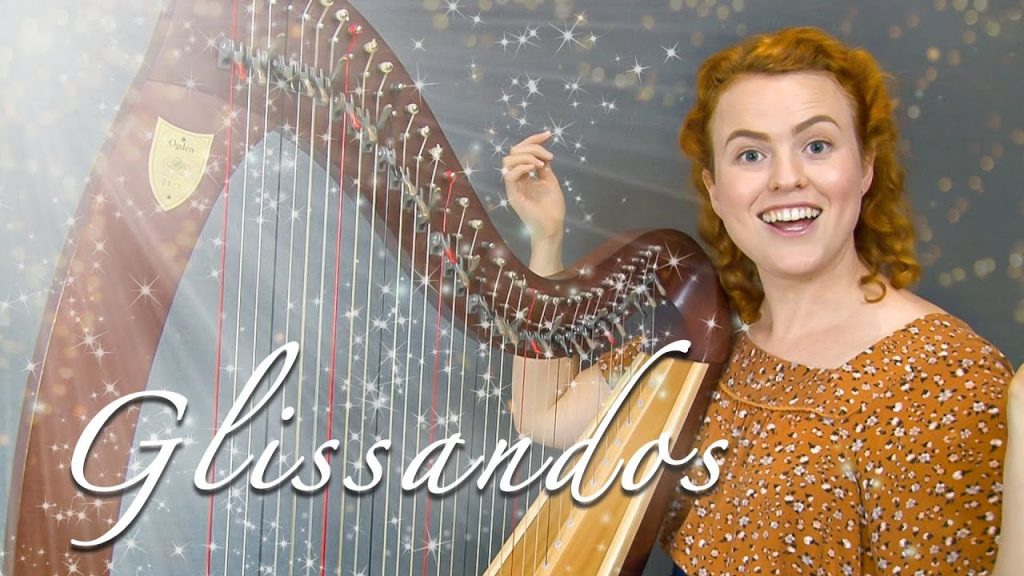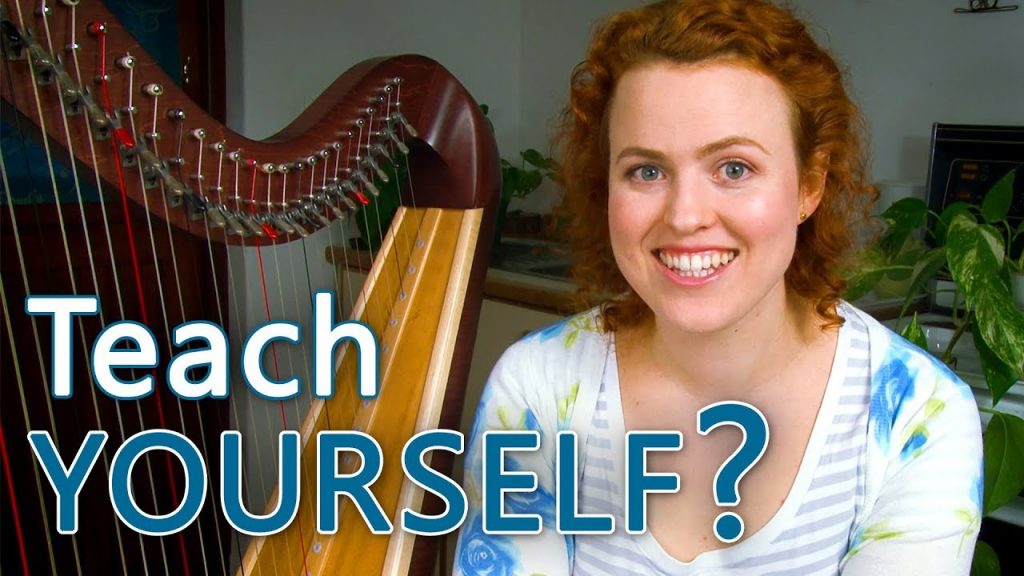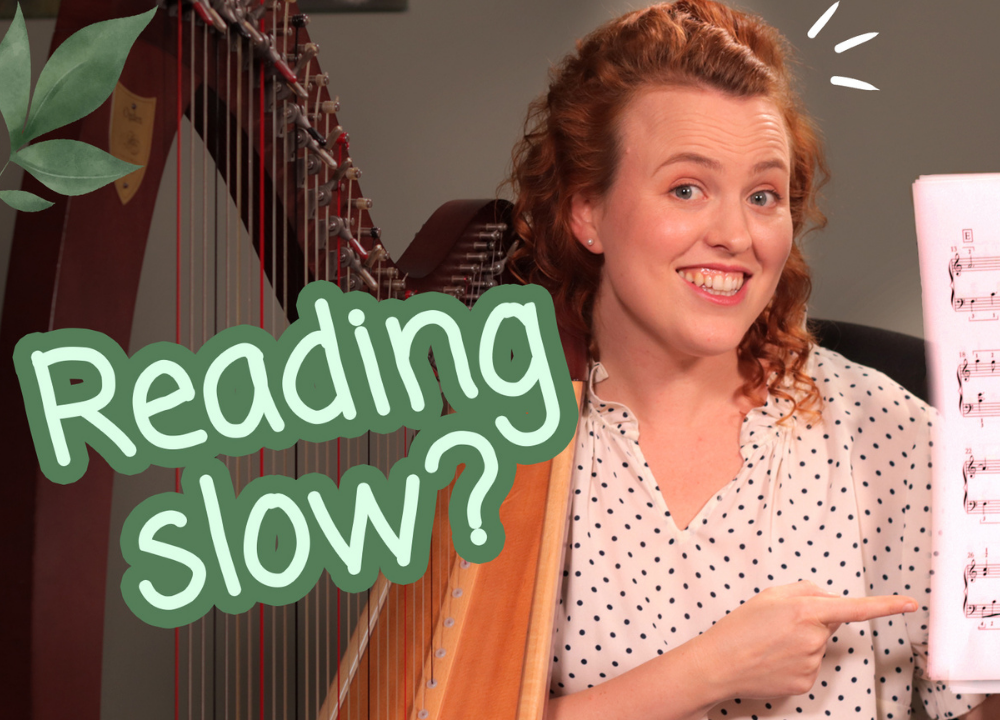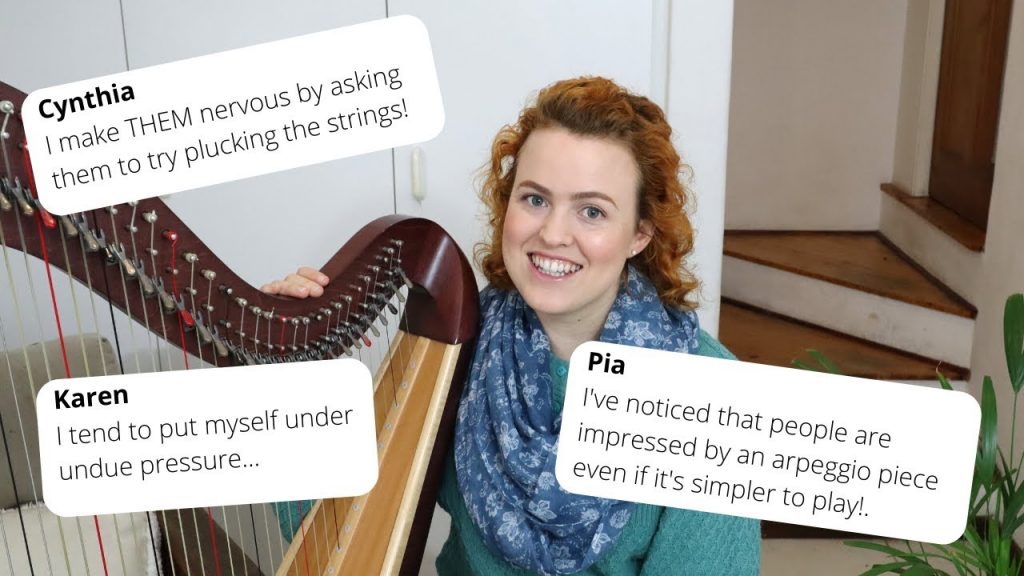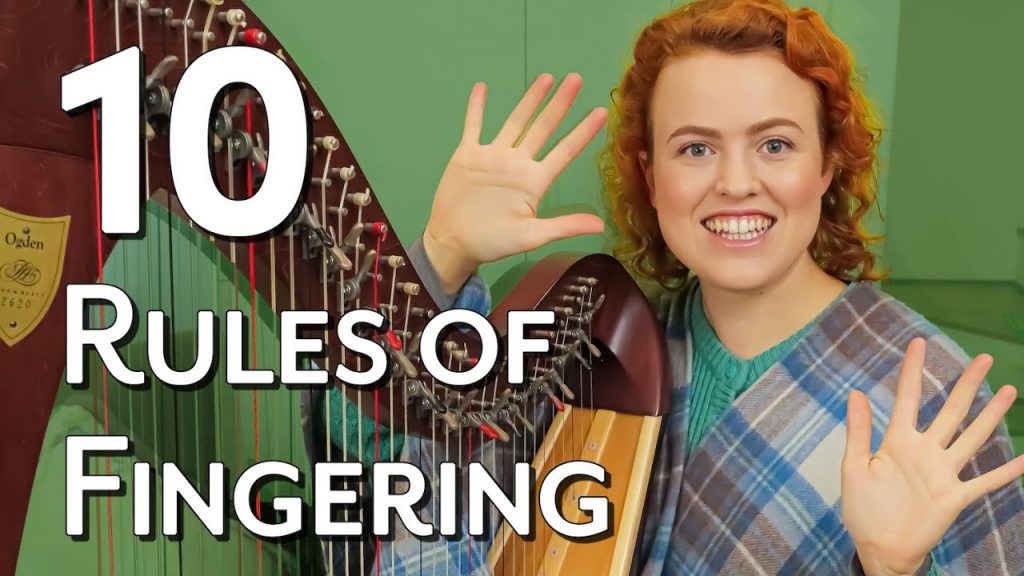Buying a Harp: EVERYTHING you need to know
If you’re buying a harp for the first time, you might know that harps are really expensive. There are so many options it can be really overwhelming! Well, today I’m going to help you out and tell you everything you need to know to make a good choice with your first harp.
It can be a pretty scary thing to purchase your first harp. There’re so many different options, and we don’t really know what the most important thing to consider is. There is information on the internet, but it may be bits and pieces here and there. I’m going to take you through all the different options you need to consider, step by step. So, let’s get into it.
HARP SIZES
(I won’t be talking about pedal harps today, because that isn’t recommended as a first harp-purchase, being very big, difficult to maintain and expensive. We’re just going to be looking at different types of leaver harps today).
There are two categories of lever harps: floor harps and lap harps.
Floor harps are a little bit bigger in comparison to lap harps. They stand on the floor, with their own legs, and can support their own weight. A lap harp is one that you play either on your lap, or with a strap so you can walk around with it. It’s smaller with a lesser number of strings.
There’s a common misconception that lap harps are easier to learn because they’re smaller. Some think that it’s aimed for children, or that it’s the beginner harp. This isn’t the case, it’s actually more difficult to begin a lap harp. The reason the floor harp is easier (and the one I recommend) when first learning harp, is because it supports its own weight -meaning it’s not as heavy – and it’s easier to position your body in comparison to the harp. You’ll find it easier to learn finger technique and how to hold your body while playing. There’s less possibility of tension building up, since you don’t have to brace yourself to keep the harp still.
There are some cases where you might want to buy a lap harp as your first:
1) You’re needing to move it around a lot to play in small spaces
2) You want to be able to travel with it as easily as possible
3) If you have a very small, confined space in the place where you’re learning to play the harp, then maybe you would consider purchasing a lap harp.
Where possible, I would recommend going for a second-hand floor harp. Save up if you can, because it’s worth it in the long term if you learn your technique on a floor harp first. This is just my opinion – in the end you need to decide what you’re happy with, and that’s fine.
HOW MANY STRINGS?
When it comes to the number of strings, I’d say the standard number would be the strings on a floor harp. You get a nice amount of bass notes and you have more than enough up in the treble part as well.
You don’t need anything bigger than 34 strings to be able to play most music. Some may like the extra two bass notes that you’d get with 36 strings – just bear in mind your harp is going to be heavier. So 34 is great, and if you’re going to purchase a lap harp, I’d suggest not going less than 26 or 27 strings – you may be able to deal with 22 strings, but you’re honestly going to miss out on some of those bass notes, so I would recommend going for 26 or 27 strings.
STRING TENSIONS (pros & cons)
Let’s look at string tension. You get:
1) High-tension
2) Medium-tension
3) Low-tension strings.
Low-tension strings are easier to pluck because they’re looser and they tend to have a brighter tone. They’re easier to play fast music on, so if you’re really wanting to play Celtic music, and if that’s the only style you’re interested in, I’d highly recommend going for low tension strings. They’re also good for people with physical limitations in finger strength. If you’re wanting to play for relaxation instead of finger strengthening, then low tension strings might be for you.
But low-tension strings are more likely to buzz, which can be a bit of a struggle and it’s more challenging to learn some aspects of technique.
High-tension strings are really good for developing finger strength and good technique, and this is important if you like classical music and are considering advancing to the pedal harp. You’ll want that finger strength to have an easy transition changing pedal harp, so wherever possible, you’ll want to have a lever harp with high tension strings.
Some people prefer the tone of a higher-tension string. They’re usually gut strings, and have a richer, warmer tone.
Some of the reasons you may not want to use high-tension strings would be if you’re concerned about injury. If you don’t have good technique, you’re more likely to get injured. But if your technique is decent, it shouldn’t be a problem, just remember playing with higher tension can be tricky. If changing to a pedal harp, I’d recommend going for higher tension strings… if not, go for medium or lower tension strings.
STRING TYPES
Now let’s look at types of strings. There’re three main types of strings:
1) Nylon
2) Gut
3) Carbon fibre.
Nylon strings are more durable than gut strings. They have a brighter sound and are the least expensive.
Gut strings on the other hand have a warmer, richer sound but they’re more expensive. They’re also more likely to break and they’re not very durable. If there are changes in temperature or humidity, your strings will pop and you’ll have to replace. For some people it’s worth the risk for the tone of the harp.
Carbon fibre strings have the brightest tone. They tend to be quite strident. They’re by far the most durable, but they’re also the most expensive.
So what do I recommend? Nylon is a good choice for most people. It’s cheaper than the other strings, and it’s got a lovely bright tone which a lot of Celtic harpists really like. If you like the sound of gut strings or carbon fibre strings, then go for it and spend the extra money. If you wanting to advance to pedal harp then gut strings would be the best.
STRING SPACING
This is the distance between the strings, how close or far apart they are from each other. There isn’t really a standard when it comes to that distance. I’ve noticed that the spacing variation between pedal harps and most floor harps is similar, so I wouldn’t worry about it if you’re going to get one of those two.
Lap harps have much narrower string spacing, which isn’t the end of the world but it’s not ideal for learning solid technique. You’re likely to struggle with buzzing and learning to cross over and under, so some aspects of technique will be difficult to learn.
I recommend choosing the floor harp, as you don’t have to worry about string spacing. If you’re going for a lap harp though, just know there’ll be more to consider.
LEVERS
I’m not going to talk about the types of levers today, just about how many levers you want.
Some lever harps (like mine) have levers on every string. Others may just have F levers, or F and C levers, or B-flat levers. Do you want them all? Is that worth spending extra money on?
Reasons to have ALL the levers:
- You’re a multi-instrumentalist wanting the ability to play in any key
- You’re a singer and you want that flexibility of choosing what works best for your voice (that’s what I felt)
- You’re in a band with other instruments and you want the flexibility to join them in any key, and change between keys easily without re-tuning everything.
- You’re playing from sheet music often, wanting to play in the key mentioned in the sheet music without hassle
- You’re wanting to play classical musicAll the above are good enough reasons to have all the levers.
Reasons not to have all the levers:
- It’s cheaper. I think that’s probably the only reason why you’d want to get fewer levers.
My recommendation would be to invest in all the levers if possible. It’s very convenient. But if you’re on a budget, get fewer levers on your harp and make sure the harp maker is able to put on levers at a later stage if you find that you really want them.
HARP WEIGHT
The weight of your harp is linked to the size of the soundboard. A really big soundboard gives a beautiful big tone, but it’s going to be a lot heavier.
If you’re going to be playing your harp mostly at home, not moving it around that much, or have someone strong to carry the harp for you then you don’t need to worry about the weight of the harp. I’d suggest going for something that you really like the sound of.
If you’re a travelling musician, you might want to consider something smaller, like carbon fibre harps. There are other designs that are made to be a little bit lighter too. I recommend when going for your first harp, weight shouldn’t be a huge consideration.
HARP ACCESSORIES
When you’re purchasing your harp, it’s a good idea to purchase a few accessories that you’ll need at the same time – especially if you’re having your harp shipped from overseas. Some accessories are more important than others, so you don’t need to get everything!
When it comes to bags, dust covers, or travel cases for your harp, these are important and I recommend getting one of them. You don’t need a hard fiberglass case unless you’re travelling a lot with your harp. Fiberglass cases are quite expensive so just a lightweight material cover/case will be fine. If you’re concerned about dust you could put your material bag over your harp when you’re not playing it, a separate dust cover is not so necessary.
Another thing you definitely need is a tuning key with the harp (make sure your harp maker sends you one).
There are some great tuning apps that you can use directly on your cell phone, if you want to save money and not buy a tuner. Another necessary thing is a music stand. A music stand is important for the music to be at the right height without you turning your head or compromising your position at the harp when you play.
When it comes to sitting at the harp, I would say it would be great if you can get a stool at the same time as purchasing your harp – something that is height-adjustable so you can figure out what is the right for you when playing. But if you can’t get that, we can also make do with a dining chair with a cushion on it.
CLICK HERE to view the accessories I’ve mentioned
BUYING A HARP
If you have a friend or a teacher who knows more about harps, talk to them. Get their advice and discuss this with them. If you have someone to talk to you there’s no need to do this on your own! And if possible try out the harp yourself. Maybe there’s a harp festival or a harp circle you can attend. If it’s not at all possible for you, you’re in a really isolated part of the world and there’s no harpists around you, well then you just have to do what you can. But if you can travel to an area where there are harps, I would recommend it. Wait a little bit longer and it will help you make a better choice.
When wanting to purchase I’d suggest going to a physical shop, a well-reputed, well-respected, and widely available harp brand because that is the safest bet. Something like Dusty Strings or Camac would be a really good option. Also, it’s a good idea to consider where the harp is made. If you have really well-respected harp brands in your country then that would be really great! Because you can order supplies from them and it will just be so convenient.
RENTING A HARP
Renting is a good idea when you get started because it gives you the time to learn a bit about the harp. Figure out what you like, then when you’re considering different harps to purchase, you can actually play them and see what you like.
HARP MUSIC GENRES
Think through your reasons for learning to play the harp because this is going to have implications in the type of harp that would suit you. What genre do you like? If you’re wanting to play popular tunes and flowing beautiful music that’s just relaxing, then it doesn’t matter what style of harp or what type of harp you purchase. I think you need to go for something that speaks to you and that has a beautiful tone that you like.
If you’re wanting to play Celtic music then this works best with a brighter tone and a lighter tension string, maybe nylon strings would be a good idea. An easy safe bet would be something from Dusty Strings or Camac, they are very good harp brands.
If you’re wanting to play Classical music, potentially moving to a pedal harp in the future, then going for something with higher tension strings – potentially gut strings – something from Lyon & Healy, Salvi, or from Aoyama is a safe choice.
If you’re wanting to play jazz harp then you should move to playing a pedal harp in the future. Pedal changes make it a lot easier to play jazz, so in that case all recommendations I made for classical music would apply here.
JOINING A MUSICAL GROUP / SOLO ARTIST
If you’re wanting to play with an orchestra in the future you’ll need to work towards getting a pedal harp, so it would be good to go for a lever harp that’s a bit more classical.
If you’re wanting to play in a band, the other instruments in the band are going to be so much louder than your harp so you’ll need to look for a pickup (mic) so that your harp can be heard.
If you’re wanting to play with Celtic sessions or small ensembles with other musicians, still try going for a harp that has a bigger sound because other instruments tend to drown out the harp.
If you’re thinking about playing healing harp music or harp therapy, then you would need to consider a harp that’s easy to move around… Particularly if you’re going to play in a hospital or hospice type setting. You also might want to play music for long periods of time, and to feel really relaxed yourself so that you can bring the right atmosphere to the room, and in that case, it would be a really good idea to go for lower tension strings so that you don’t get tired.
SECOND-HAND HARPS
Second-hand harps can be so amazing. Some harp companies even have certified second-hand harps which means that they’ve checked that they’re in good order, and they are putting their branding behind it, so those are usually really good quality. If you’re buying it privately then make sure that you look at the harp yourself and you get advice from somebody who knows.
Harpsicle is a really reputable company and you should be able to sell your harp second-hand afterwards. Or less expensive than Harpsicle, are the cardboard harp companies that have been coming up onto the market recently like Backyard or Fireside and Waring. I would say that these cardboard harps would probably last you longer than a Pakistani harp. I’ve heard some really good reports about these cardboard harp state and I’ve listened to recordings. They have a beautiful tone so I think that would be a good thing to try.
BUDGETING
Sometimes people wonder… “Am I actually good enough to invest that much money when I’m first learning to play the harp? Don’t I need to just start with something cheap, because I don’t want to commit to something so big?” But I would encourage you to actually go for a good harp since you’re more likely to want to stay committed. You’re more likely to enjoy the process of learning, and to actually stay with it for the long term if you’re experiencing this process on a good quality instrument.
So, if at all possible I would say give yourself a good budget for purchasing your first harp. And, if you’re purchasing a harp from a good harp company that is reputable and makes harps that other people want to purchase… Then if you change your mind in the future you might be able to resell your harp, so I don’t think you’re going to regret your decision completely if you go for a good quality harp the first time.
WORD OF ADVICE
Just go for it! Remember there isn’t one perfect harp that you can buy, so try not to agonise too long over what to choose!
If you’d like to learn the basics step by step in an encouraging and supportive environment, you are in the right place – come check out my harp community!
OUR MONTHLY MEMBERSHIP
When you join, you’ll receive:
- Vibrant harp community
- 1 credit per month
- Members-only private group
- Members-only online meetups
What is a credit?
- When you join our Standard Membership, you get 1 credit every month.
- One credit is equivalent to one Course or Workshop, and can be used to redeem any of your choice. This gives you the flexibility to choose whatever suits your stage of learning.
- Non-members do not receive credits, but can purchase Courses or Workshops once-off for US$45.
- All purchases are yours to keep – no matter if they’re purchased with credits or cash.
